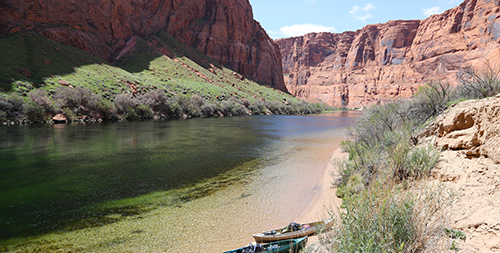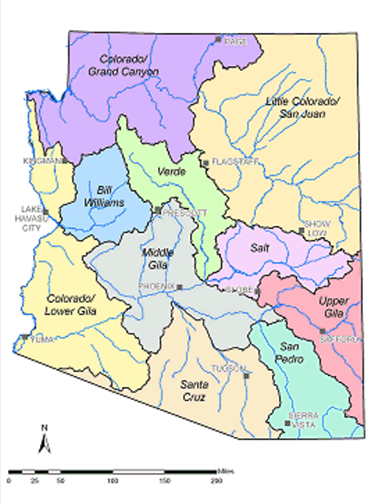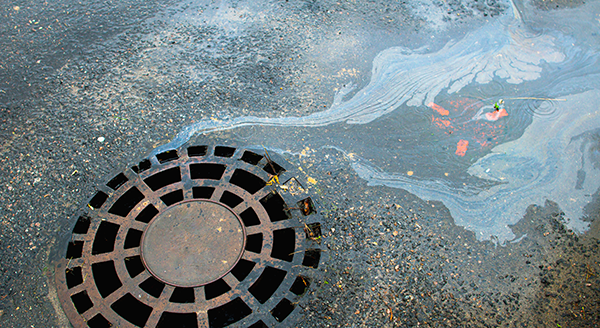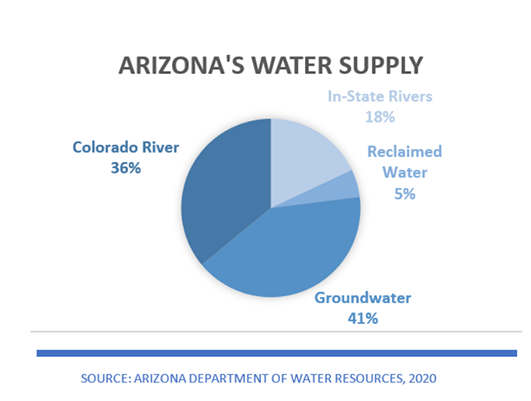P2 Section #3 | Automotive Maintenance - Pg 1

Section 3 | Detailing and Car Washes
Revised On: March 1st, 2024 - 9:30 a.m.
Learning Objectives:
- Explain what a watershed is
- Describe the risks associated with watershed contamination
A Common Thread

Arizona has a diverse landscape, from forests in the Colorado Plateau to the iconic Saguaro cacti in the Basin and Range. The state is home to an abundant variety of wildlife, including more than 500 bird species, bears, javelina, and deer, all of which play a vital role in the ecosystem. A healthy environment is crucial to human well-being, providing essential resources such as food, water, and fuel. All life relies on a common source: water. Today, Arizona faces a significant challenge regarding its water supply. The quantity and quality of this invaluable resource are at risk due to persistent drought conditions, population growth, urban expansion, and water contamination.
Where does Arizona’s water come from?
Arizona has an impressive water portfolio despite its arid and semi-arid climate. Our water supply is derived from various sources, which include the Colorado River, other in-state rivers, groundwater, and reclaimed water. Several storage reservoirs and delivery systems have been constructed across the state to ensure that Arizona's water supply is used efficiently. These include the major Salt, Verde, Gila, and Agua Fria River reservoirs. These water bodies are sustained by precipitation and melted snowpack from high elevations. With AZ receiving an average of only 12.26 inches of rainfall annually and as little as 3-4 inches annually in lower elevations, careful management is still needed to maintain this renewable resource.
Our water resources are all connected, from the high mountain ridges down to the basin through watersheds. A watershed is an area of land that channels water to a common waterbody, typically to lower elevations. Watersheds drain rain or snowmelt into rivers, streams, and creeks that eventually lead to much larger waterbodies like lakes and oceans. Healthy watersheds store and release water, as well as filter out pollutants. The water flowing from the mountains down to lower elevations is considered stormwater runoff. Some water will seep into the ground, collecting in underground reservoirs called aquifers, also known as the water table.
Watersheds contain forests, agricultural fields, towns, and cities. These areas of land help transport water to lower elevations. Cities especially are known for generating all kinds of pollutants, which get picked up by flowing water and make it into waterways. Urban centers are covered with man-made surfaces. Rooftops, streets, and sidewalks are typically constructed using concrete, asphalt, and tarmac. These surfaces impede water from being absorbed by the surrounding environment. Storm drains and dry wells were introduced to address this issue.

A storm drain’s primary purpose is gathering and discharging rainfall into the nearest water source. Dry wells are designed to guide water into the ground to saturate the water table. Any substance discharged into these drains and wells will enter the water without undergoing treatment. Most municipal storm drains are not connected to wastewater treatment plants. Numerous chemicals, heavy metals, hazardous substances, trash, and other urban wastes enter our stormwater discharge systems despite restrictions on releasing pollutants directly or indirectly into them.

As we will learn in the next section, contaminated water can have disastrous environmental outcomes, causing harm to plant and wildlife populations and leading to the degradation of our water supply. Degradation is a process in which something is made worse. Water degradation occurs when water is altered in composition or condition, making it less suitable for its intended purposes. This can happen for various reasons, from industrial and agricultural activities to improper disposal of waste and chemicals. Unfortunately, car washes are known to use a variety of toxic substances during the washing process. Regular business activities threaten human health and the environment if not managed properly.
In the next lesson, we will talk about wastewater and runoff.
GUIDES
Implementing P2 > | Spanish >
Inventory Control > | Spanish >
Solvent-Contaminated Wipes >
Used Oil >
Waste Determination >
POSTERS
Clear Walkways > | Spanish >
Clean Workspace > | Spanish >
First-In, First-Out > | Spanish >
Use & Stow > | Spanish >
VIDEOS
Auto Shop Housekeeping>
FIFO for Auto Shops >
What is P2 >
OTHER
P2 in Action >

